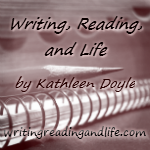In the months since I started a blog and began my journey in writing a book, I have found countless blogs and sites all about what to do and what not to do in writing. It can be a little daunting for a beginner, so I’ve decided to break it down the simplest way I can. Not only do I do a weekly blog round-up of posts that I think are useful for everyone and anyone (amateur and professional alike), but I READ these blogs. Most of them are about the same thing, but with differing perspectives on the “How To” of writing.
This is redundant. When you run, it’s fast. You don’t have to point out how fast Mary is running because she’s… running. Now, if she were jogging that might be a different story, but still not quite right. Jogging is slower than running. How can someone jog quickly? So how about we do something different:
“Mary quietly ran away.”
This is acceptable. Why? I don’t know about you, but when I run it’s kind of noisy. There’s heavy breathing, the sound of feet hitting pavement or grass or fallen leaves, and the swish of your clothes rubbing together. It may not be at a high decibel, but it’s still not quiet. If Mary is running, it is different than if she is running quietly.
No matter what though, try to avoid adverbs. Use them only if they are absolutely necessary (see what I did there). Adverbs = Bad
This is a tricky topic. It took me a while to figure it out myself, so I’m going to do my best to explain it to you. Let’s start with an example:
“Mary felt cold and alone.”
This is telling. There’s nothing exciting about telling. It doesn’t give a reader a sense of involvement in the story. Let’s try something else:
“The chill of the air sank into Mary’s bones, the tingle of goosebumps covering her skin. The quiet of the night reminded her of an empty attic.”
This is showing. It isn’t my best work, but we’re working with examples here, so bear with me. When you read the second example what do you see? It’s the same thing as the first example, but it puts the reader right into Mary’s skin, taking the reader along for the ride. Telling involves naming the emotion your MC or other character is feeling and is distant. Showing is using description or dialogue in such a way that the reader feels the emotions intuitively. In essence, Show = Good and Tell = Bad
There are about a million and one ways to use back story. Really, the best way to decide how much back story to put into your novel and where is subjective. There are a couple of things you should avoid where it is concerned though:
1) Boring the reader- Sometimes, good back story just isn’t right for the flow of a book. You may have written some awesome prose in exposition detailing everything that happened before the story started, but unless it is absolutely necessary for the forward movement of your main plot you should cut it. Otherwise, you’ll to lose your reader’s interest and your reader won’t recommend it to friends.
2) Useless details- Your character is your creation, so you may be so in love with your character’s life that you explain everything that ever happened to him/her. Why? Does it move your story forward? Try to keep back story limited to what is essential to your story’s progress. Unless your character’s fifth grade year being the worst of his life is relevant to what is going on at that moment, don’t put it in.
Those are the two main things and really, they are both pretty much the same thing. The best way to use back story is in dialogue. You can use it in exposition, but you could fall into the two things to avoid that I just mentioned. So, be careful when using back story. It’s a steep slope to conquer. Back Story = Good, Bad, or Ugly (depending on how you use it)











Great Post! You covered everything very thoroughly. The one thing I see a lot of in beta reading is reputation, in action, in description, etc. (i.e. the character is always raising their eyebrows, or everything is described as heavy or smooth.) But really, what you said here holds the most important things.
You make a good point. Action and discription does need to be varied in order to keep it interesting. Thanks for putting in your two cents!
I too can get a bit overwhelmed with all the writing experts out there and the number of writing sites. Sometimes they make me want to crawl in to a hole and die – oh and burn my book first.The one about adverbs is particularly impt for me. I jst finished my final edit for my book thats coming out in Dec and I was focusing sepcifically on adverbs and exclamation marks and ellipses…(I am addicted to ellipses…can you tell…lol)the most impt piece of writing advice i ever heard of was (for me) the simplest and most needed (for me) – If you want to be a writer, then write. Every day, all the time, write everything and anything under the sun.
I've heard that advice as well. I agree with it most of the time, but in my opinion there are times when getting out and into the world without writing that day could help benefit your writing. I wrote a blog about it called "Sometimes You Have To". It's mainly about unplugging for a day or even a week. The rest of the time, writing everyday – even if it's just 20 words – is a good idea.